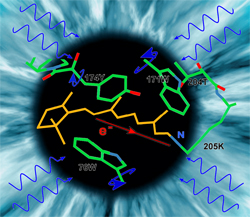NSF I-Corps Semiconductor and Microelectronics Free Virtual Course Being Offered
University researchers with groundbreaking ideas in semiconductors, microelectronics or advanced materials are invited to apply for an entrepreneurship-focused hybrid course offered through the National Science Foundation (NSF) Innovation Corps (I-Corps) program. The free virtual course runs from Sept. 15 through…


 “We have demonstrated that chromophores (light-absorbing substances in retinal photoreceptor molecules), do not have to change shape in order to trigger the visual signal,” says Kenneth Foster, professor of physics in
“We have demonstrated that chromophores (light-absorbing substances in retinal photoreceptor molecules), do not have to change shape in order to trigger the visual signal,” says Kenneth Foster, professor of physics in